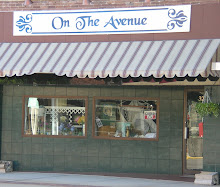
All the world loves a clown they say. And clown collectibles are pretty amusing and adorable too.
Clown collectibles range from antique toys and classic cookie jars, to colorful head vases, novelty baking pans, and even postcards. Of course many of them also have a long-standing association with the circus world.
The history of clowns can be traced back to antiquity, but our modern concept of clowns started with clown-like characters who entertained in England during the middle of the 18th century and were eventually given starring roles in the Royal Circus of the 1780s.
Do you collect clowns? Stop by our little shop on the Avenue to see what we have...the cute threesome above are still available!
Clown collectibles range from antique toys and classic cookie jars, to colorful head vases, novelty baking pans, and even postcards. Of course many of them also have a long-standing association with the circus world.
The history of clowns can be traced back to antiquity, but our modern concept of clowns started with clown-like characters who entertained in England during the middle of the 18th century and were eventually given starring roles in the Royal Circus of the 1780s.
Do you collect clowns? Stop by our little shop on the Avenue to see what we have...the cute threesome above are still available!




